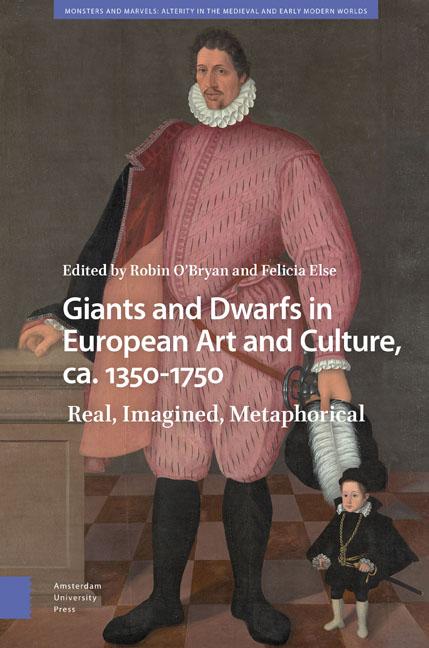7 - Ordinary Marvels: The Case of Dwarf Attendants in Habsburg Spain
Published online by Cambridge University Press: 13 April 2024
Summary
Abstract
An examination of sixteenth- and seventeenth-century portraits sheds light on the paradoxical situation of the dwarfs belonging to the Spanish Habsburg court. A critical analysis reveals how artists developed ways to depict people who were both objects of wonder and familiar courtiers. The images are divided into three categories: paintings of individuals; of dwarfs who appear alongside their royal master or mistress; and group portraits. The focus for the latter is Las Meninas, in which Diego Velazquez depicted the royal household with the achondroplastic dwarf Maribarbola Asquin and the proportionate dwarf Nicolasito Pertusato. Analysis of the portrait of a Mexican noblewoman with her indigenous companion has intriguing connections with Las Meninas that are explored here for the first time.
Keywords: achondroplastic dwarfism, proportionate dwarfism, Habsburg, Las Meninas, Diego Velazquez, Antonio Rodriguez Beltran
My purpose in this chapter is to explore portraits of the royal family and their dwarfs at the Spanish Habsburg courts of the sixteenth and seventeenth centuries. Conventionally, encounters between the two have been presented as a binary with the “normal/ideal” body of the elite figure at one extreme and the “anomalous,” non-standard dwarf at the other. However, the royal family's own impairments complicate who exactly is “normal” in this context, bearing in mind that “normal” is a modern term for what was conceptualized in the early modern period as everyday phenomena on the one hand and uncommon phenomena on the other. It is important to recognize that ideas about bodies—like the language we use to describe them—are not fixed, but extremely fluid, and culturally specific. It is useful, therefore, to embrace the flexible, early modern approach, whereby the difference between “regular” and “anomalous” bodies was a matter of degrees rather than absolutes. An assessment of the portraits can shed light on these complex issues, not least by revealing what aspects of a dwarf's role and appearance were deemed worthy of memorialization on canvas and which were excluded.
In Spanish courts, dwarfs were counted among the gente de placer (literally “people of pleasure”), whose number included people of average height who entertained with a mixture of physical and verbal humor, and the locos—a loose category that embraced the talkative as well as the genuinely insane.
- Type
- Chapter
- Information
- Giants and Dwarfs in European Art and Culture, c. 1350-1750Real, Imagined, Metaphorical, pp. 241 - 272Publisher: Amsterdam University PressPrint publication year: 2024



